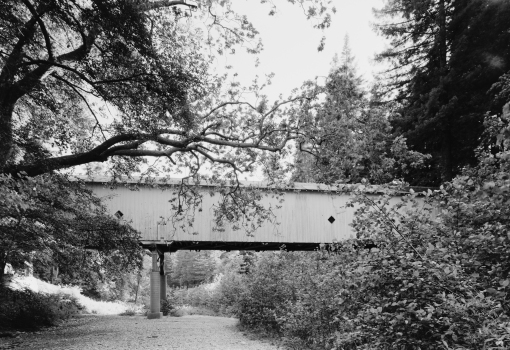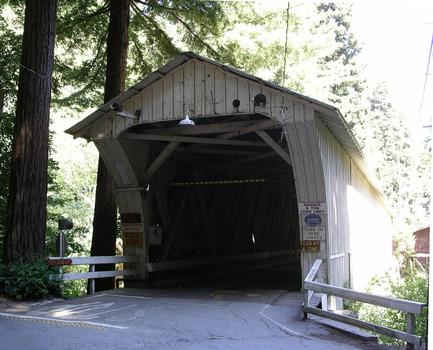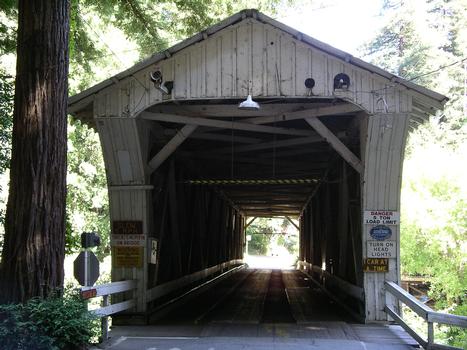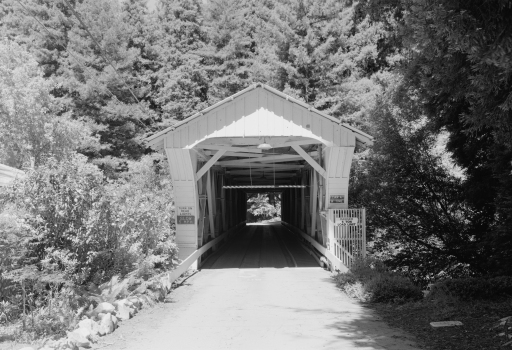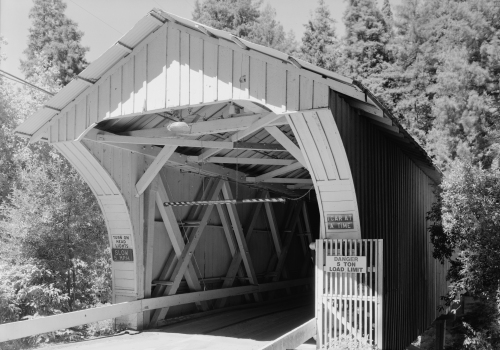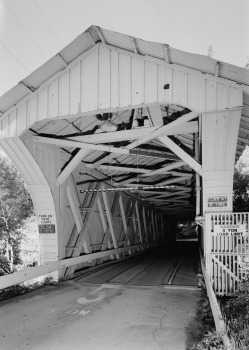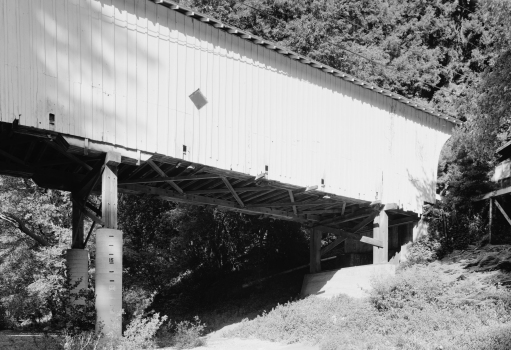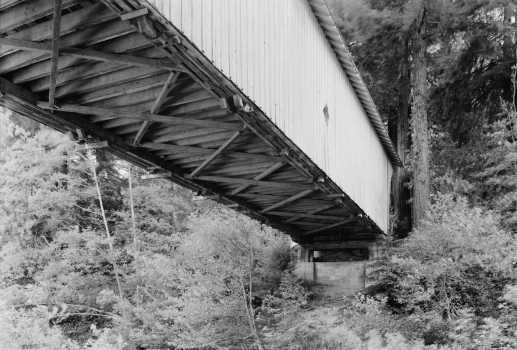General Information
| Other name(s): | Paradise Bridge |
|---|---|
| Completion: | 1872 |
| Status: | in use |
Project Type
| Structure: |
Covered bridge |
|---|---|
| Function / usage: |
Road bridge |
| Structure: |
Smith type truss bridge Through truss bridge |
| Material: |
Timber bridge Structurae Plus/Pro - Subscribe Now! |
Awards and Distinctions
Location
| Location: |
Santa Cruz, Santa Cruz County, California, USA |
|---|---|
| Crosses: |
|
| Coordinates: | 37° 0' 37.69" N 122° 2' 37.72" W |
Technical Information
Dimensions
| span | 49.68 m | |
| length | 54.86 m |
Materials
| truss |
wood
|
|---|---|
| abutments |
concrete
|
| pier |
reinforced concrete
|
Significance
Powder Works Bridge is the second oldest of twenty-one extant Smith truss covered bridges in the United States. It was built in 1872 for the California Powder Works, the first powder mill on the Pacific Coast, and is one of the last vestiges of the company's extensive manufacturing complex that occupied the site from 1861 to 1914. The bridge is an excellent example of the early work of the Pacific Bridge Company, a nationally significant bridge engineering firm.
Historic American Engineering Record (HAER CA-313)
Excerpt from Wikipedia
The California Powder Works Bridge is a historic covered bridge in Santa Cruz, California. It is a Smith truss bridge, built across the San Lorenzo River in 1872 by the California Powder Works, an explosives manufacturer whose factory complex stood on the river banks. The bridge was designated a National Historic Landmark in 2015 as one of the best-preserved national examples of the Smith truss. It is owned and maintained by the Paradise Park Masonic Club, and is open to pedestrian and vehicular traffic, with a posted weight limit of 5 tons.
Description and history
The California Powder Works Bridge is located about 2 miles (3.2 km) north of downtown Santa Cruz, spanning the San Lorenzo River just downstream of Henry Cowell Redwoods State Park. The bridge carries Keystone Way, a private road in the residential development known as the Paradise Park Masonic Club. It is a single span, with a total structure length of 180 feet (55 m) and a span length of 163 feet (50 m). Its total width is 30 feet (9.1 m), and it has a roadway width of 19 feet 3 inches (5.87 m). Its trusses are built out of Douglas fir, and its roof is corrugated metal. The exterior is clad in vertical board-and-batten siding.
The bridge was constructed by the Pacific Bridge Company, its major elements manufactured at a plant in Alameda, and was installed in 1872. It was built for the California Powder Works, whose main manufacturing plant was on the east side of the river. The company operated on that site between 1863 and 1914, after which the site was largely demolished and abandoned. The property was purchased by a Masonic organization from Fresno, and developed as a summer colony they dubbed "Paradise Park".
The bridge is one of 23 known historic (pre-1955) examples of a Smith truss remaining in the United States, and is the longest and among the best-preserved of those, as determined by a nationwide survey conducted by the National Park Service. This truss type was marketed on a nationwide scale by the Smith Bridge Company, and was briefly competitive with iron bridges, which were coming to predominate in the landscape.
Text imported from Wikipedia article "California Powder Works Bridge" and modified on April 11, 2020 according to the CC-BY-SA 4.0 International license.
Participants
Relevant Web Sites
- About this
data sheet - Structure-ID
20005766 - Published on:
02/10/2002 - Last updated on:
09/01/2020

